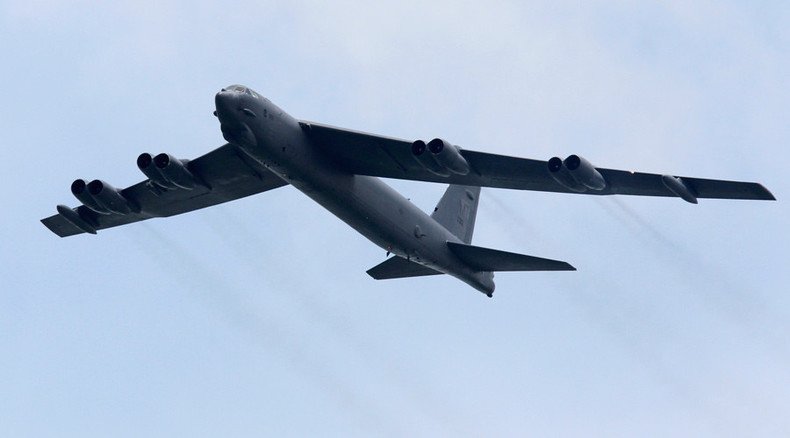US & S. Korea consider ‘deploying American strategic assets’ amid border crisis

The US are reviewing the possibility of deploying ‘strategic’ military assets in South Korea in order to put pressure on Pyongyang, South Korean officials said Monday.
"South Korea and the US are flexibly reviewing the timing of the deployment of US strategic assets with close tabs kept on the crisis situation on the Korean Peninsula," said Defense Ministry spokesman Kim Min-seok, as quoted by local Yonhap news agency on Monday. He did not identify the assets that Washington is ready to deploy.
Later on Monday, Yonhap cited Korean military sources as saying the US is considering to dispatch B-52 or a B-2 Spirit stealth bomber and a nuclear-powered submarine currently stationed at Japan’s Yokosuka naval base.
North ‘regrets’ S. Korean soldiers’ injury, South to halt ‘propaganda’ broadcasts - Yonhap http://t.co/QmcOUG64BApic.twitter.com/biWiyg3QXw
— RT (@RT_com) August 24, 2015Kim pointed out that at this point Seoul hopes to resolve the crisis using peaceful means. "Our position at this point is to deter the North's provocation," Kim said. "But if they wage provocation, our response will be merciless and they will truly feel sorry."
The US has previously dispatched its military assets to the peninsula to support Seoul in its stand-off with Pyongyang two years ago. In April 2013 it had flown B-2 stealth bombers in a warning to North Korea which threatened Seoul with military actions in response to US and South Korea’s joint annual drills.
As the two states are struggling to find common ground, Yonhap reported military sources as saying on Monday that North Korea has deployed about 20 amphibious landing craft to the Northern Limit Line, the inter-Korean border in the Yellow Sea.
Media report that since the beginning of the standoff last week Pyongyang has doubled its artillery power and sent more than 50 North Korean submarines out for operations.
70% of N.Korea's submarines left bases, their locations not confirmed - S. Korean official http://t.co/KgPO06ECYzpic.twitter.com/btbsPbg0nO
— RT (@RT_com) August 23, 2015The states which are at a brink of military confrontation have been locked in negotiations since this weekend. The tensions escalated after several land mines exploded on the southern side of the Demilitarized Zone between the Koreas maiming two South Korean border guards on August 9.
Seoul blamed its neighbor for planting the landmines and in response resumed its anti-Pyongyang propaganda broadcasts on the border for the first time in over a decade.
North Korea has denied the responsibility for the explosions threatening with military actions if Seoul doesn’t stop the propaganda broadcasting. South Korea, in its turn, demanded an apology, refusing to cease the broadcasts.
The tensions skyrocketed as Pyongyang shelled the “propaganda” loudspeakers while the South’s military fired dozens of artillery shells back across the border last week.
On Friday, the North Korean leader Kim Jong-un placed the country’s troops on high alert. South Korea and US forces stationed in the region, in their turn, dispatched eight combat jets which simulated the striking of enemy targets.
On Monday, South Korea reiterated its demands for an apology from its neighbor for armed provocations.
“We need a clear apology and measures to prevent a recurrence of these provocations and tense situations,” South Korean leader Park Geun-hye told her top aides. “Otherwise, this government will take appropriate steps and continue loudspeaker broadcasts."
The two Koreas technically remain at war, as the countries haven’t ratified their 1953 peace treaty.
LISTEN MORE:












